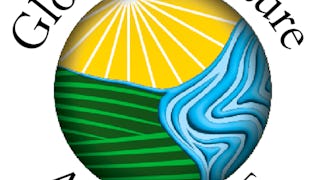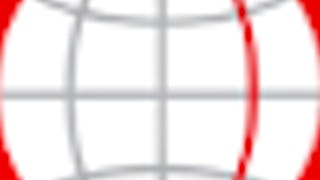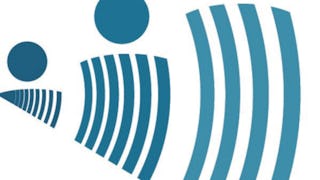This course will help guide policy makers, advocates, and program managers as they design, plan, and implement sodium reduction interventions to protect public health. We invite you to see what interventions have been proven at scale, what shows promise, and what lessons have been learned along the way from the implementation of sodium reduction strategies all around the globe. Our emphasis is implementation in settings with resource constraints. There are nine modules in this course. The first two modules set the stage with information on the science of sodium and context for lowering intake at a population level; the next five modules describe specific interventions; and the final two modules discuss comprehensive strategies in the wider context of public health, as well as tools for monitoring and evaluating interventions.


Skills you'll gain
Details to know

Add to your LinkedIn profile
9 assignments
See how employees at top companies are mastering in-demand skills

There are 9 modules in this course
In this first module we provide a course overview. We will explain the significant role that sodium plays in the development of high blood pressure and cardiovascular disease in people all over the world. Sodium intake needs to be lowered in every country to benefit the health and economic well-being of all populations. But how do we do it? What has worked before? We will discuss these topics throughout the course. First, let’s take a look at cardiovascular disease around the globe. Then we’ll look at what sodium does in the human body, what happens over time when we eat too much sodium for our bodies’ needs—and what can happen when we lower the amount of sodium we eat.
What's included
9 readings1 assignment9 plugins
It is important to understand the setting before we take a look at the different sodium reduction intervention options that could work there. Every country will require more than one approach, but combining interventions will be most effective when sources of sodium are understood. Before you select the best interventions for your country, you need to understand how people consume the majority of their sodium.
What's included
3 readings1 assignment5 plugins
With sodium intake so high in many countries, many individuals consume more sodium than is safe. This includes individuals who are currently in good health but will likely develop high blood pressure over time, individuals with known high blood pressure, and individuals who have undiagnosed high blood pressure. The entire population will benefit from the protection that mandatory sodium limits provide, especially when it is part of a multi-component strategy to reduce sodium in the food supply and protect public health.
What's included
5 readings1 assignment5 plugins
This module will walk you through the basics of front-of-package labels (FoPL), such as what the intervention is supposed to do, and who it is supposed to reach. It turns out that even children take part in food purchasing when labels are accessible to all and easy to understand! A strategy to use FoPL will require a setting where packaged foods are common. But as we’ll explore later in the module, this is now practically everywhere around the globe. FoPL are more easily interpreted when they convey a recommendation rather than simply stating levels of nutrients. In some regions, the existing legal structure is already sufficient to begin drafting and implementing regulations. In other regions, laws must be passed first. We will share lessons learned from real people who have worked on instituting FoPL in different countries. You will learn how these previous efforts formed our current understanding of best practices, and the importance of focusing on consumer understanding rather than industry-led goals when it comes to label design. We will provide basic guidelines for implementation. We will end with a real-world example from Chile, where challenges were addressed and FoP warning labels were successfully implemented.
What's included
6 readings1 assignment6 plugins
In Module 5, we will describe the rationale for using low-sodium salts as a potential strategy to reduce dietary sodium intake at the population level. You will learn what low-sodium salts are, their health benefits, and the potential risks associated with their use. We will discuss what to consider before promoting the use of low-sodium salts at the population level. Low-sodium salts are available for sale in a wide range of real-world settings, but their implementation on a large scale has not yet been reported. We will conclude by describing how low-sodium salts were used as a public health strategy to lower sodium intake in two different populations.
What's included
6 readings1 assignment5 plugins
In this module we will explore public food procurement policies. Governments already have requirements in place for how food is purchased, so why not optimize them to serve healthier food? It’s not only the amount of salt that can be lowered, but other important aspects of a healthy diet that can be incorporated as well, such as increased servings of fruits and vegetables, fewer processed foods, and reduced sugar and unhealthy fats. Food procurement policies can improve the local food environment by increasing the availability of healthier products, and they can also promote the purchase of local agriculture products, which strengthens local food systems and economies, and reduces the impact on our climate. We will discuss the strategies for developing and implementing strong and impactful public food procurement policies, as well as how to assess for compliance and evaluate these policies.
What's included
6 readings1 assignment7 plugins
The focus of this module is on food consumed outside the home from independent restaurants, chain restaurants, and street vendors. Around the world, there is a high consumption of food prepared outside the home. In many countries, it’s a growing source of food and sodium intake. Food prepared outside the home is often more sodium dense than home-prepared food. As a result, interventions in the restaurant environment are crucial for addressing population sodium intake. While there are restaurant interventions in place globally, there are not specific nutrient limits for restaurant chain meals, nor global standards for restaurant portions or serving sizes. Further, the policies that have been developed so far have either had limited evaluation, or have shown inconclusive results. While there is still much to learn about this complex environment, countries and cities around the world are providing potential solutions that offer hope for improving the food environment and creating healthier diets.
What's included
7 readings1 assignment7 plugins
In this module, we will discuss how the most successful and/or innovative approaches to sodium reduction can be combined and placed within a wider context of public health interventions. Multi-component, population-level policy changes are the most effective. We will explore here what has worked.
What's included
7 readings1 assignment7 plugins
This module provides guidance regarding the tools available to assist governments in assessing progress and achieving goals once programs are implemented. Planning for regular surveillance is essential to ensure that sodium reduction strategies meet specific targets on time. Equally important is allowing for a system that can identify and address challenges, so improvements can be made to existing and future programs. Finally, we will explain the importance and methods of recording and reporting progress.
What's included
8 readings1 assignment8 plugins
Instructor

Offered by
Explore more from Public Health
 Status: Preview
Status: PreviewUniversity of Maryland, College Park
 Status: Preview
Status: PreviewJohns Hopkins University
 Status: Free Trial
Status: Free TrialJohns Hopkins University
 Status: Free Trial
Status: Free TrialJohns Hopkins University
Why people choose Coursera for their career





Open new doors with Coursera Plus
Unlimited access to 10,000+ world-class courses, hands-on projects, and job-ready certificate programs - all included in your subscription
Advance your career with an online degree
Earn a degree from world-class universities - 100% online
Join over 3,400 global companies that choose Coursera for Business
Upskill your employees to excel in the digital economy
Frequently asked questions
To access the course materials, assignments and to earn a Certificate, you will need to purchase the Certificate experience when you enroll in a course. You can try a Free Trial instead, or apply for Financial Aid. The course may offer 'Full Course, No Certificate' instead. This option lets you see all course materials, submit required assessments, and get a final grade. This also means that you will not be able to purchase a Certificate experience.
When you purchase a Certificate you get access to all course materials, including graded assignments. Upon completing the course, your electronic Certificate will be added to your Accomplishments page - from there, you can print your Certificate or add it to your LinkedIn profile.
Yes. In select learning programs, you can apply for financial aid or a scholarship if you can’t afford the enrollment fee. If fin aid or scholarship is available for your learning program selection, you’ll find a link to apply on the description page.
More questions
Financial aid available,

